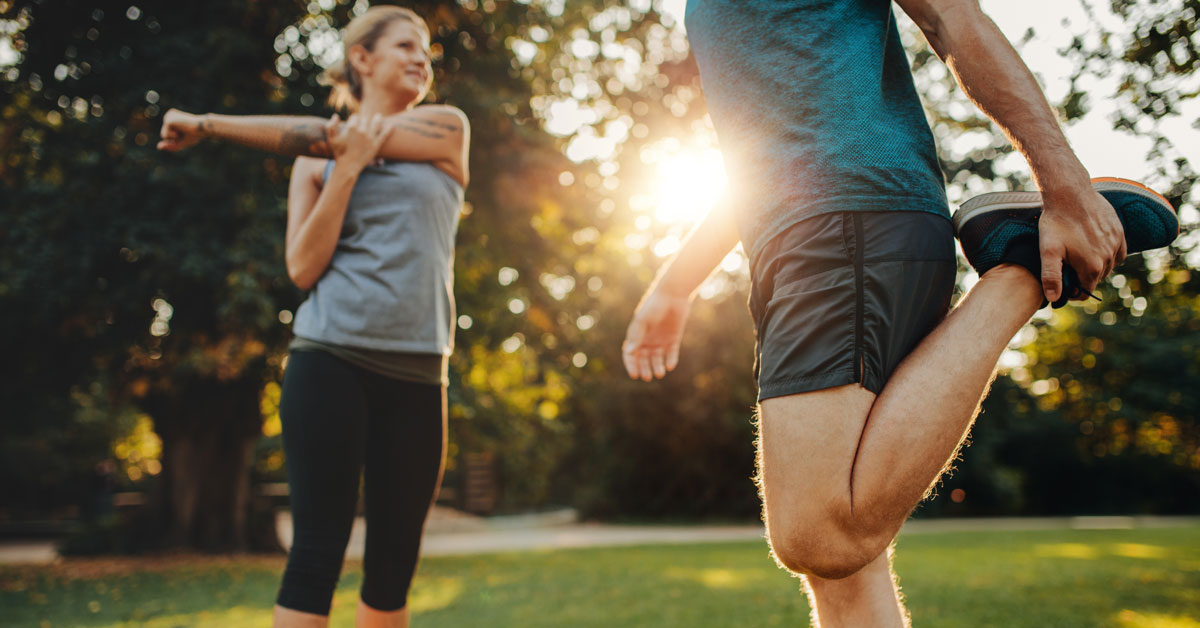4 Tips for Preventing Injury During Your Next Workout

2020 was a rough year. Due to big events like COVID-19 and the Derecho, many people got out of rhythm with their workouts. Now in 2021, as restrictions are lessening people are returning to gyms to hit their 2021 New Year’s Resolutions. Working out after taking an extended break can be difficult and can lead to injury if done in haste.
Here are a few suggestions to help make your return to normal exercise routines safe and effective.
#1) Don’t skip the warm-up and cool-down
A warm-up is designed to improve blood flow and prepare a person for the specific exercise or workout they plan on performing. The warm-up should be tailored to what type of activity you plan on doing. If you are going to be running, performing a 5-minute brisk walk is a great warm-up. If you are going to be barbell back squatting, performing some dynamic stretching followed by several bodyweight squats works well. Basically, it becomes a skill rehearsal to ensure you are doing proper technique while increasing muscle temperature.
A cool-down is designed to do the opposite. It helps you return to a resting state following your exercise. This can be a series of stretches to the muscles you just worked, a gradually decreasing jog to walk, or various light exercises that are lower intensity than your workout.
Performing both a warm-up and a cool-down will reduce your risk of a musculoskeletal injury. It will also allow you to have a better workout through faster contractions of muscle, improvements in strength and power, increased oxygen release into the muscles and enhanced metabolic reactions. All in all, it will keep you healthy and push you towards your goals.
#2) Focus as much on recovery as you do the workout
This suggestion has two components: recovery time in between workouts and recovery time in between individual exercises. In between workouts you should give yourself 24-48 hours to allow for muscles to repair themselves unless directed by a professional. Reducing this time can lead to diminished gains from your effort and an increased risk of injury. The other side of this is recovery time in between exercises. Depending on the type of exercise you are performing you are going to bias a certain energy system in your body. Different energy systems require different lengths of time to fatigue and recover. If you want to improve within a certain system you need to allow that system to recover. If you need help learning which system you are working with or the best ways to plan rest time discuss with a physical therapist, personal trainer, or strength coach.
#3) Start gradually
A gradual return to levels of intensity you were previously working out at is vital. You cannot expect to, after taking several months off, have the same levels of strength, endurance, or mobility that you did before. Reduce the intensity and workload of your workouts and do not get discouraged if they are still difficult. Bodies are adaptable and will lose strength when we are not continually testing them. As you adapt back into your workouts methodically increase levels of intensity to get to your pre-COVID-19 levels of activity and beyond!
#4) Discuss your plans and concerns with a professional
A common theme through this blog post is if you have any questions make sure to talk to a professional. A physical therapist, personal trainer, or strength coach can help tailor every part of your workouts to meet your needs. They can discuss measurable and attainable goals for you to be striving to achieve. They can help you work around any specific problems you have such as access to equipment, an injured knee, or lack of time. Finally, they can be there to answer any specific questions you have on your health journey. These are general suggestions and working with a professional can change these from general suggestions to specific answers.
Sources:
NSCA Basics of Strength & Conditioning Manual
///
If you have any questions or would like help getting started with a workout plan that will also help you avoid future injuries, contact Performance Therapies to schedule an appointment with one of our Physical Therapists.